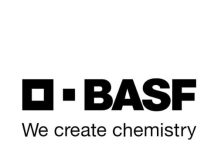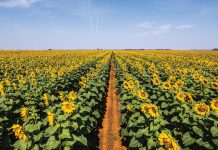 Producers are among the very few providers of goods whose way of life is intrinsically agile. According to Standard Bank senior manager: Agribusiness, MC Loock, this gives producers a clear advantage in managing the increasing volatility in their sector.
Producers are among the very few providers of goods whose way of life is intrinsically agile. According to Standard Bank senior manager: Agribusiness, MC Loock, this gives producers a clear advantage in managing the increasing volatility in their sector.
‘Producers are used to adjusting their operations on a daily basis in order to manage variations in short-term weather events and longer-term climate patterns. They have always operated in an environment in which markets and prices shift continuously, often without warning. And they are accustomed to constantly reworking their finances, whether for inputs, equipment, or capital expansion,’ Loock said.
Input costs
Taking a closer look at recent herbicide price trends published by the Department of Agriculture, Land Reform and Rural Development, glyphosate, acetochlor and atrazine prices were up by 211% year on year (y/y), 139% y/y and 143% y/y respectively in December 2021. In terms of pesticides, imidacloprid, lambda-cyhalothrin, and acetamiprid prices were up by 124% y/y, 45% y/y and 121% y/y respectively in December 2021. The ongoing spike in agrochemical prices is anticipated to persist for the greater part of 2022/2023.
However, commodity prices have also been on a bullish trend that may offset the high input costs somewhat. There have been increases in grain and oilseed prices in the region of 20% to 40% y/y, which have had a very positive effect on farm profit margins. This is because the higher commodity prices have been acting as a buffer to the input costs that have been rising from the end of 2021. However, the inflation rate of variable cost items such as fuel, fertiliser, and agrochemicals has been accelerated by the ongoing Russia-Ukraine war. This inflation rate will really become a concern if it outpaces the rate of commodity price increases. Thus far this has not materialised, with crop commodity and food prices forecast to remain quite bullish for most of this year.
Success lies in planning
Effective management of volatility starts with planning. Loock further remarked: ‘The basis of good planning is understanding your costs. If you know how much you have spent to get your product to market, then you automatically know what price you cannot afford to accept. In turn, this tells you whether or not – and what – to plant or rear.
‘In the case of an intensive livestock operation, for instance, where the cost of feedstock makes up 60% to 70% of total operating expenses, a volatile maize price has a devastating impact on the feed margin and the overall profitability of the operation. The use of hedging as a tool to manage the cost of feedstock is essential.
‘In an ideal world you would probably be farming with both cattle and maize, to save on your feedstock costs and improve soil health with organic fertiliser. Mixed farms can also take advantage of the different profitability cycles of both enterprises to be able to absorb price shocks across a longer part of the value chain.’
For many producers, price discovery for inputs takes place at least nine months ahead of the sale of a product, making budgeting essential to ensure profitability.
Under normal conditions, price trends show that input prices generally trend lower in February compared to September of each year, which means that costs can be saved through buying inputs in advance for the following planting season. However, the biggest limitation to implementing this procurement strategy is the producer’s strained liquidity around February of each year.
Focussed and refined production planning at farm level need to be top of mind way in advance of any production season. There is a likelihood of increased production facility demand due to rising input costs. Hence, careful and realistic product price risk strategies will be an advantage to mitigate market risk for the coming season.
‘Contracts give you the comfort of knowing before you plant that your prices will exceed your costs and that there will be profit,’ Loock said. ‘It also makes it easier to get production finance. It is important, however, to keep some of your product unhedged for selling at the end of the season, in case stocks are drying up and buyers are willing to pay premium prices. This will consolidate your profitability.’
Weather patterns, too, are becoming increasingly unpredictable and extreme. In this regard, Loock advised: ‘It is still possible to manage this kind of uncertainty positively. In the planning phase, create a wide range of different scenarios that include all possible variables that could impact your business. Build in trigger or price levels at which you will need to reconsider your production portfolio in time to mitigate negative results. This process will also give you insight into ways in which you should be diversifying your business so that, in any given circumstance, you have the means to be sustainable.’
He was also upbeat as he mentioned that farming was still a generally profitable business to be in. By doing some planning and being prepared to innovate, the producer can remain agile.













